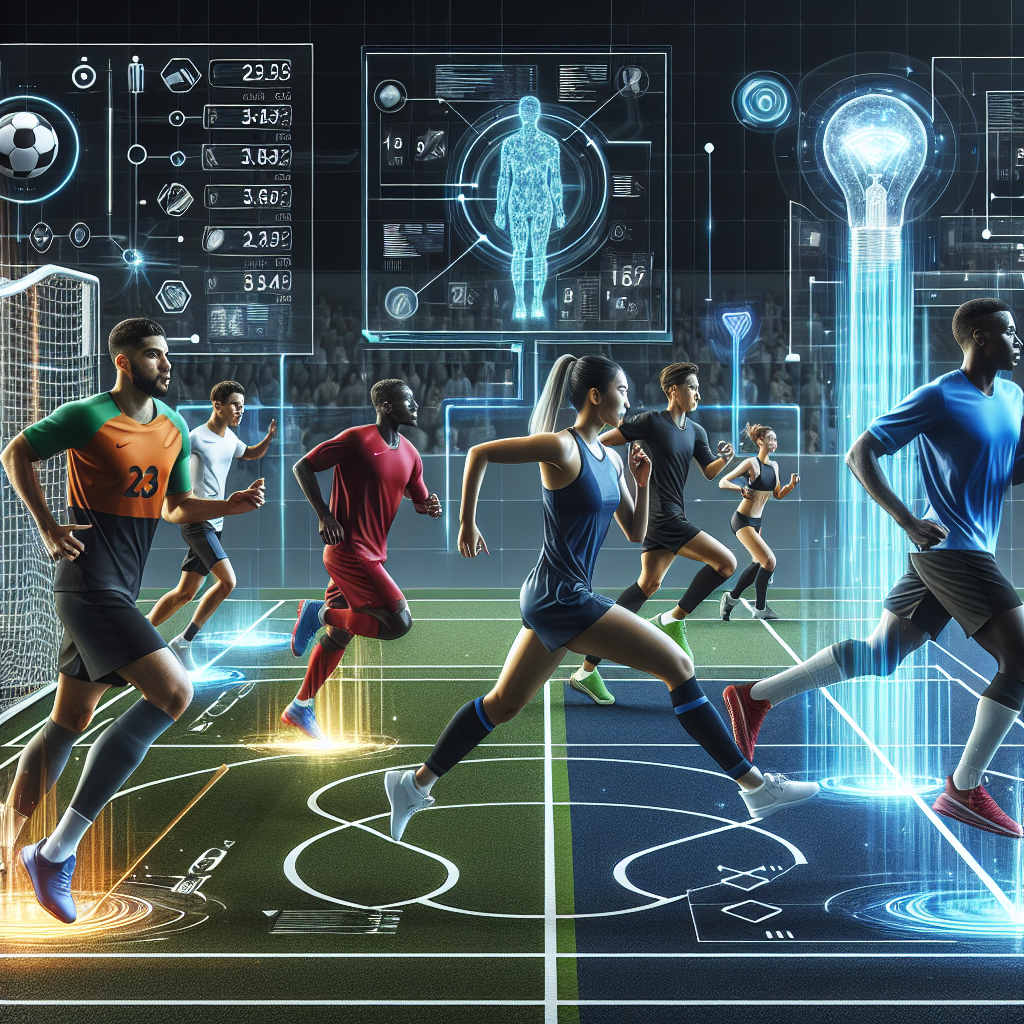Artificial intelligence (AI) has made significant strides in recent years, revolutionizing various industries and improving processes across the board. One area where AI has shown particular promise is in sports performance analysis. By leveraging the power of AI, coaches, athletes, and teams can gain invaluable insights into their performance, leading to improved training strategies, enhanced player development, and ultimately, better on-field results.
There are a number of key benefits that AI brings to sports performance analysis, including:
1. Enhanced Data Analysis: AI algorithms can process vast amounts of data in a fraction of the time it would take a human analyst. This allows coaches and teams to quickly identify patterns, trends, and correlations in performance data that may have been missed otherwise. By analyzing data from sources such as wearable sensors, video footage, and game statistics, AI can provide valuable insights into an athlete’s strengths, weaknesses, and areas for improvement.
2. Real-Time Feedback: AI technology can provide real-time feedback to athletes and coaches during training sessions and games. For example, AI-powered cameras can track an athlete’s movements and provide instant feedback on technique, form, and positioning. This immediate feedback allows athletes to make adjustments on the fly, leading to faster skill acquisition and improved performance.
3. Injury Prevention: AI can also play a crucial role in injury prevention by analyzing biomechanical data to identify potential risk factors for injuries. By monitoring an athlete’s movement patterns and workload, AI can help coaches and trainers develop personalized training programs that reduce the risk of injury and optimize performance.
4. Performance Prediction: AI algorithms can analyze historical performance data to predict future outcomes and trends. For example, AI can analyze game statistics, player performance data, and opponent data to generate insights into potential game strategies and tactics. This predictive analysis can help coaches and teams make informed decisions on game planning, player selection, and training regimens.
5. Talent Identification: AI can also be used to identify and recruit talented athletes. By analyzing performance data from youth leagues, scouting events, and competitions, AI can identify promising athletes based on key performance indicators such as speed, strength, and skill level. This can help teams identify and cultivate talent at an early age, giving them a competitive edge in the long run.
6. Competitive Advantage: In today’s highly competitive sports landscape, any edge can make a difference. By leveraging AI for performance analysis, teams can gain a competitive advantage by optimizing training programs, identifying areas for improvement, and making data-driven decisions on game strategy. This can ultimately lead to improved performance, better results, and a stronger position in the league standings.
While the benefits of AI in sports performance analysis are clear, there are also some challenges and limitations to consider. For example, AI algorithms are only as good as the data they are trained on, so ensuring the quality and accuracy of the data is crucial. Additionally, AI technology can be expensive to implement and maintain, requiring teams to invest in the necessary infrastructure and resources.
Despite these challenges, the potential benefits of AI in sports performance analysis are too significant to ignore. As AI technology continues to advance, we can expect to see even more innovative applications in sports, leading to improved performance, enhanced player development, and a more data-driven approach to coaching and training.
FAQs:
1. How does AI technology analyze sports performance data?
AI algorithms use machine learning techniques to analyze sports performance data, such as player statistics, video footage, and biomechanical data. These algorithms can identify patterns, trends, and correlations in the data, providing valuable insights into an athlete’s performance and areas for improvement.
2. What types of data can AI analyze in sports performance analysis?
AI can analyze a wide range of data sources in sports performance analysis, including player statistics, game footage, wearable sensor data, and biomechanical data. By analyzing these data sources, AI can provide insights into an athlete’s performance, technique, and overall fitness level.
3. How can AI technology help prevent injuries in sports?
AI technology can help prevent injuries in sports by analyzing biomechanical data to identify potential risk factors for injuries. By monitoring an athlete’s movement patterns, workload, and fatigue levels, AI can help coaches and trainers develop personalized training programs that reduce the risk of injury and optimize performance.
4. How can AI technology improve talent identification in sports?
AI technology can improve talent identification in sports by analyzing performance data from youth leagues, scouting events, and competitions. By identifying key performance indicators such as speed, strength, and skill level, AI can help teams identify and recruit talented athletes at an early age, giving them a competitive edge in the long run.
5. What are some of the challenges of implementing AI technology in sports performance analysis?
Some of the challenges of implementing AI technology in sports performance analysis include ensuring the quality and accuracy of the data, the cost of implementing and maintaining the technology, and the need for teams to invest in the necessary infrastructure and resources. Despite these challenges, the potential benefits of AI in sports performance analysis are significant and can lead to improved performance, enhanced player development, and a more data-driven approach to coaching and training.

